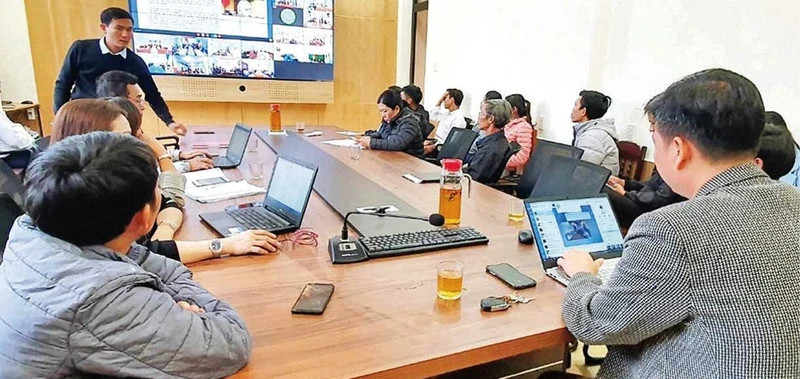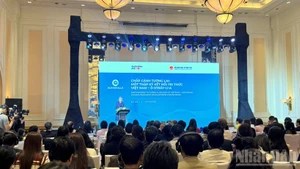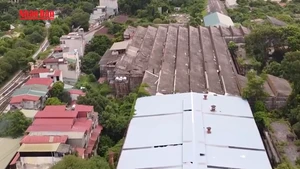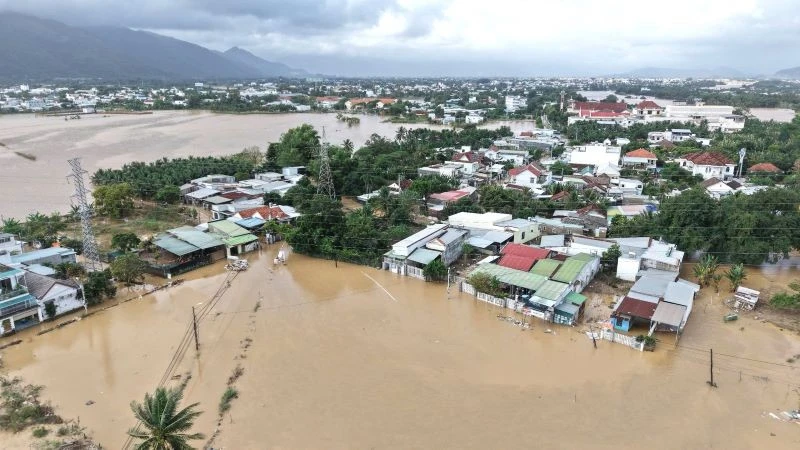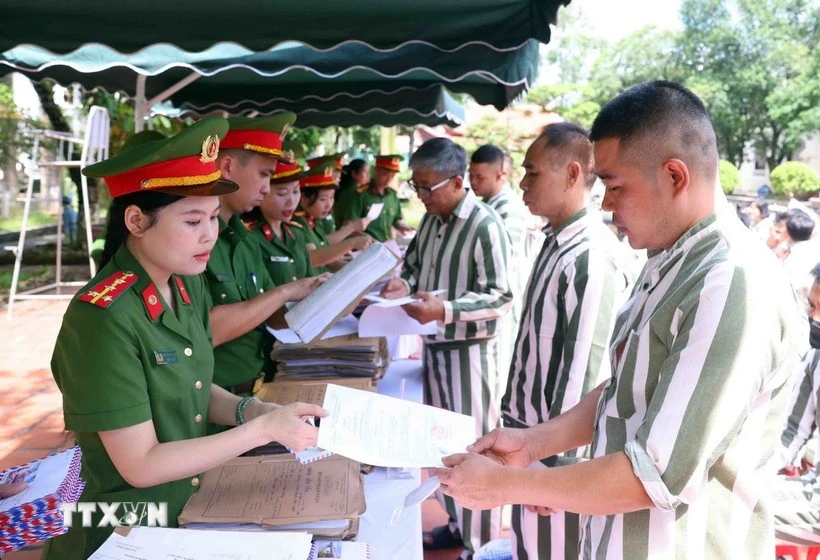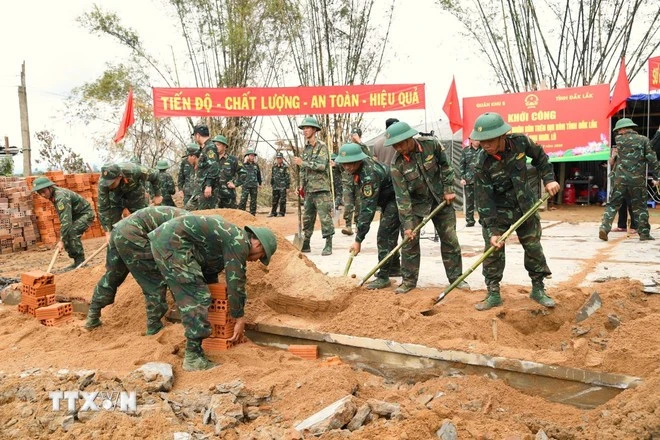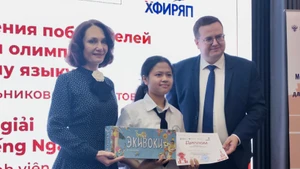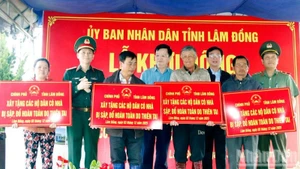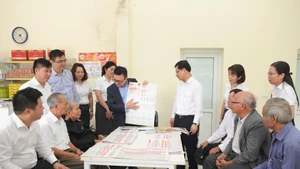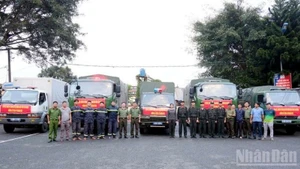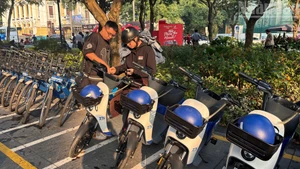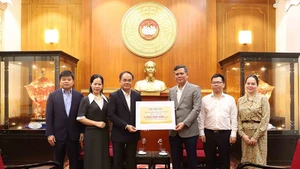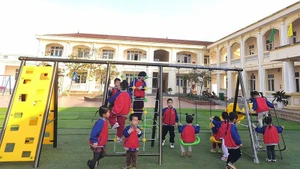Among the criteria for model new rural communes, there is a criterion for building at least one smart new-style rural village (hamlet). Currently, many localities are promoting the construction of modern, smart villages and communes.
The criteria for the smart village model are specifically regulated by the provincial people's committees. Currently, not many localities have issued specific criteria for smart villages, but localities and people all understand that this is a village model that applies modern, intelligent, and automatic technologies to production and life.
Villages and communes in the technology era
According to the chairman of the People's Committee of Bach Dang Commune — the first model new rural commune in Kinh Mon District (Hai Duong), Tran Van Tang, many tasks related to commune management are currently done via phone, such as adjusting the lighting system.
Just one phone call from the chairman of the Bach Dang Commune People's Committee to the manager of the irrigation of the dragon fruit field, hundreds of automatic sprinklers sprayed water at the same time, irrigating the vast dragon fruit field that was about to enter the season. The chairman explained that these were just the initial models of smart rural areas. In the future, the commune will have many more smart models; only then will it meet the standards of a model new-style rural commune.
At Lam Phu Hamlet, Giao Phong Commune, Giao Thuy District (Nam Dinh), the security camera system has covered the entire hamlet. The hamlet's cultural house is 500 square metres wide and is equipped with high-speed Wi-Fi for studying, looking up information, and learning about people's business models. The Wi-Fi usage rate of households has reached 80%.
Many products of the hamlet's residents, especially fish and vegetables, have been introduced, promoted, and traded via the internet, thus helping to stimulate consumption and increase product value.
Pham Van Minh, Head of Lam Phu Hamlet, said: The hamlet has only been implementing the construction of a smart new-style rural hamlet model for about five to six months now, but thanks to the consensus of the people, Lam Phu has become the first unit of Giao Phong Commune to be recognised as a smart new-style rural hamlet, contributing to helping the commune achieve the standard of a model new-style rural hamlet.
Many localities across the country face difficulties in building smart new-style rural areas, as the physical conditions of many households are not uniform, the sense of responsibility in using the internet and cameras is not high, and the advantages of the internet in labour production have not been exploited. This is also the reality that many localities have not been able to achieve model new rural areas.
In three pilot villages building a smart new-style rural model in Tuong Son Commune, Thach Ha District (Ha Tinh), the people's committee of the commune provides each household with a QR code, which integrates all information about residents, production status, labour structure, and garden diagrams, connecting households via the internet.
In addition to helping to easily identify households, through the use of QR codes, each resident as well as village officials when seeing that the environment, traffic routes, and waste classification are not guaranteed, can record a video reflection through the management software to be able to monitor and urge each other, at the same time village and commune officials can grasp and have timely and effective solutions.
In particular, in Ha Thanh Village, after naming the streets and numbering houses for all roads and households, the identification and updating of the situation here has been digitised, with just one operation of scanning the QR code in front of the village gate, visitors and residents can easily identify the location and living conditions of each family.
Vinh Hung Commune, Phu Loc District, is one of the communes selected by the Thua Thien Hue Provincial People's Committee to pilot the smart commune model. Vinh Hung Commune has effectively applied five shared software to the management and operation activities of the government; 100% of documents are digitally signed and circulated on the network environment, contributing to quick processing, saving time, controlling work, and improving the effectiveness and efficiency of management and operation; 100% of administrative procedures are digitised; and 100% of cadres, civil servants, and public employees are equipped with computers and interact with public services via the network environment.
Digital transformation and application of technology in production and business have been implemented by the agricultural sector and many cooperatives in the past few years. Some cooperatives such as Thuy Thanh 2, Phu Ho, Phu Thanh, and An Lo have introduced new high-quality rice varieties to be planted on large fields, in an organic and safe direction.
Clean, organic, VietGAP vegetables and fruits in the districts of Quang Dien and A Luoi are cultivated using new and advanced methods and technologies. Products of cooperatives are built, registered with brands, trademarks and OCOP certification, and put on the e-commerce platform to introduce, promote and connect with customers.
Synchronising solutions
According to Dr Nguyen Xuan Tinh, Chairman of the Gardening and Farming Association of Ha Tinh Province, to implement the resolution on developing OCOP products, the locality has selected and connected 20 households with a production area of over 500 square metres in their gardens producing organic agriculture to guide, inspect, update production processes, input services, and product consumption.
Localities have flexibly implemented many solutions, including strong application of the internet in management, care, product traceability, and sales.
Nguyen Viet Son, Director of Hoang Ha Agricultural Production Cooperative (Tuong Son Commune, Thach Ha District), said that through connected data, the online farming diary provides full information on production stages, the types of pesticides used, the number of times and dosages, quarantine time, and harvesting, thus helping consumers compare and verify information and product images while contributing to connecting and increasing the competitiveness of agricultural products.
According to Nguyen Dinh Duc, Director of the Department of Agriculture and Rural Development of Thua Thien Hue Province, there are still too few enterprises investing in agriculture and rural areas. One of the reasons is that the connection is not good.
Faced with this situation, digital transformation is considered a solution, aiming at the goal of building a comprehensive, ecological, highly effective agricultural development, towards a modern, smart countryside. The digital transformation model is being deployed and replicated to support individuals and organisations in accessing digital technology applications in agricultural production.
Notably, the safe and smart agricultural model in the fields of livestock, crop cultivation, and aquaculture applies automation technology to analyse, monitor, supervise, retrieve, and process data, to help reduce production costs and ensure product quality.
The provincial agricultural sector is focusing on reviewing and applying appropriate digital technologies to the state management process, while gradually changing the mindset and production methods of economic components in the agricultural sector towards digitalisation, smart agriculture, and precision agriculture, thereby creating momentum to restructure the agricultural sector towards increasing added value and sustainable development, towards circular agriculture and organic agriculture.
Efforts in building smart new-style rural areas are also a strong determination of Nam Dinh Province. According to Nguyen Van Huu, Deputy Chief of the Coordination Office of the New Rural Development Programme of Nam Dinh Province, the province has assigned the Department of Information and Communications to continue to promote training on digital transformation for localities; promote the role of "Community Digital Technology Teams" at the commune and hamlet levels; improve skills in using technology equipment; and apply the internet to people's lives in rural areas.
In the short term, Nam Dinh strives to accumulate about 184 communes and towns meeting advanced new rural standards by the end of 2023, with about 20 communes and towns or more meeting model new rural standards, and at least 280 OCOP products achieving 3 stars or more. To achieve that goal, localities first need to strive to promote and complete the criteria for smart rural areas.
